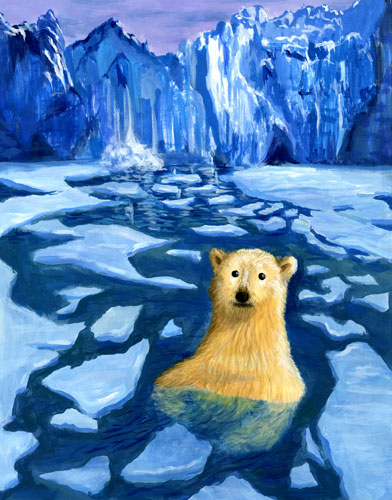Beyond politics and the virus:
The Arctic is more than 12 degrees above normal. Repeat: the average for the entire Arctic is 12 degrees above what was normal in 1990. Would be even more extreme compared to pre-industrial. pic.twitter.com/lC6ruo5Wdr
— Jeff Berardelli (@WeatherProf) November 22, 2020
Climate change is earth’s biggest issue, and is more than just a problem for future generations.The shit is already here. The hottest warming-up spot is also one of the coldest — the Arctic.
And it’s getting so warm visitors don’t need long-johns, with a situation grim for the immediate future. Increased attention to the situation shows the scenario not getting any better.
Via CBS News on Monday:
It’s been happening for several years now, especially in the autumn, but it never ceases to unsettle meteorologists like myself: Temperatures in the Arctic are astonishingly warmer than they should be.
According to the University of Maine’s Climate Reanlayzer, this weekend the Arctic Circle was an average 12 degrees Fahrenheit above normal.
This is not just one location, but the average of all 7.7 million square miles.
That is a huge area, nearly double the size of the entire United States, being on average 12 degrees above normal.
…
“It’s all but becoming an annual reminder of the rapid climate change we have observed in the Arctic,” explains Dr. Zack Labe, an Arctic climate specialist from Colorado State University.While the pace of global warming is the fastest we have seen in millions of years, nowhere is it warming faster than the Arctic. Temperatures in the Arctic are rising at three times the pace of the rest of the globe.
In 2020, Arctic warming is among the highest levels yet.
The rapid warming trend in the Arctic can be traced to the unique makeup of the Arctic Ocean, which is rapidly changing.
The Arctic is mainly ocean covered by millions of square miles of sea ice most of the year.
But since the 1970s, sea ice extent has been decreasing quickly and sea ice volume has dropped by two-thirds.
…
Each year Arctic sea ice reaches its minimum in September.
This year was the second lowest on record.
While that in itself is significant, what happened next was even more surprising.
The recovery of sea ice stalled for a few weeks, with October breaking records for the lowest sea ice extent on record.
…
Although the Arctic is warming all year round, the strongest warming — known as Arctic amplification — occurs during the fall months.“All of the heat that was absorbed into the ocean from the summer is released back into the atmosphere as sea ice begins reforming ahead of the winter,” explains Labe.
“There is [still] a large area of open water that would normally be sea ice covered.”
…
With such dramatic changes occurring across the Arctic, scientists agree there’s bound to be a domino effect into the mid-latitudes.
While the details are still being worked out, what appears most clear is that Arctic amplification is linked to more climate extremes in the Northern Hemisphere, potentially by shifting atmospheric and perhaps even ocean steering currents.What’s happening in the Arctic, says Labe, is consistent with our projections in global climate models, lending credibility to future projections.
He warns that we should pay close attention to the dramatic changes in the Arctic because it’s a bellwether for the rest of us: “The Arctic is really a warning sign of future climate change around the rest of the planet.”
As we welcome the Biden presidency, there is some hope we can get a workable handle on the climate crisis — notably the appointment of John Kerry in a special role for the US in going forward in cooperating with the rest of the world on fighting climate change.
And ‘special‘ is in the title (per Scientific American yesterday):
Former Secretary of State John Kerry would become the highest-ranking U.S. official ever to have a portfolio exclusively devoted to climate change when he joins President-elect Joe Biden’s White House next year.
The new title for Kerry, the 2004 Democratic presidential nominee who represented Massachusetts in the Senate for 28 years: special presidential envoy on climate change.
While Biden’s transition team offered few specifics about Kerry’s role yesterday, he’ll be the first climate official ever with a seat on the National Security Council.
And “presidential” in his title suggests Kerry will report directly to Biden, while “envoy” marks him as a senior diplomat.
If we’re in time…
 (Illustration found here).
(Illustration found here).